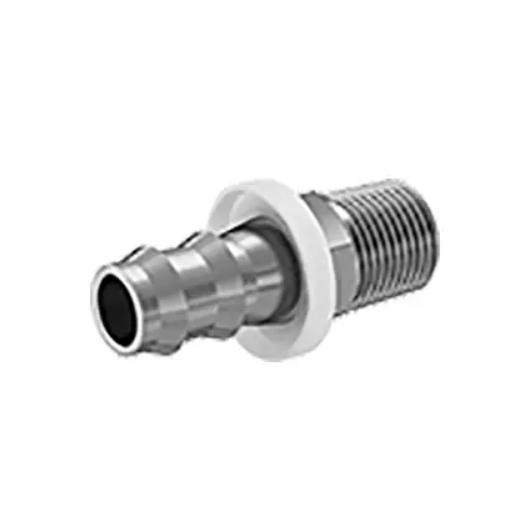Barbed hose couplings are an important component in many industries, providing safe and secure connections for hoses. These couplings have sharper barbs than standard barbed hose couplings, allowing them to grip rubber push-fit hoses without the use of clamps or ferrules. In fact, the more times you pull on the coupling, the tighter the hose will clamp, making them a popular choice for a variety of applications.
One of the main advantages of barbed hose couplings is their ability to provide a tight, secure connection without the need for additional hardware. Not only does this simplify the installation process, it also reduces the risk of leaks and ensures a more efficient and reliable system. The sharp barbs on the coupling create a strong grip on the hose, preventing it from slipping or loosening, even under high pressure or harsh environments.
When selecting barbed hose couplings, it is important to consider the specific requirements of the application. Factors such as hose type, operating pressure and temperature range should be considered to ensure the fitting is compatible with the intended use. Additionally, it is crucial to choose accessories made from high-quality materials to ensure durability and longevity.
Barbed hose couplings are relatively simple to install, making them a popular choice among professionals and DIY enthusiasts alike. The first step is to select the appropriate size and type of fittings for the hose being used. Once you select your accessory, you can push the hose over the barbs to create a safe and secure connection. It is important to make sure the hose is pushed all the way onto the fitting to ensure a proper seal.
In applications where the hose may be subject to movement or vibration, it is recommended to use hose clamps in addition to barbed couplings to provide additional security and prevent the hose from coming loose. This is particularly important in high-pressure systems, as the risk of the hose slipping from the coupling can have serious consequences.
Regular inspection and maintenance of barbed hose couplings is critical to ensuring their continued performance and reliability. Regular inspections for signs of wear, damage, or leaks can help catch problems before they escalate. Additionally, replacing accessories that show signs of wear or corrosion is critical to preventing potential failures and downtime.
All in all, barbed hose couplings are a versatile and reliable solution for connecting hoses in a variety of applications. They clamp rubber push-in hoses without the need for clamps or ferrules, making them a convenient and efficient option for many industries. By understanding the specific requirements of your application and selecting high-quality fittings, you can ensure a safe and reliable hose connection. Regular inspection and maintenance will further help extend the life and performance of your barbed hose coupling, making it a valuable component in your fluid handling system.
Post time: Mar-26-2024


